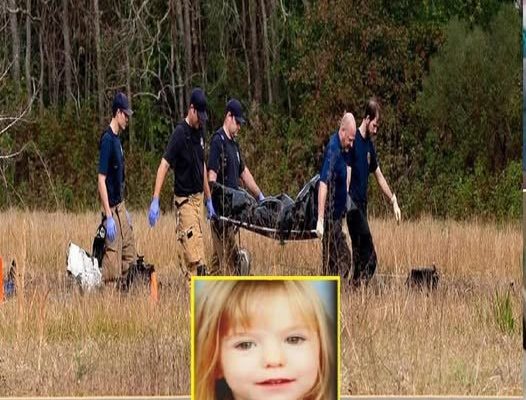One minute she was heading out to buy candy. A simple walk any child in any neighborhood should be able to make without fear. The next minute, she was gone — vanished as if the earth swallowed her whole.
Her name was Perla Alison, a little girl from Santa Martha Acatitla. Anyone who knew her remembered her as bright, talkative, and always moving — the kind of kid who made friends with every street vendor and every neighbor. She wasn’t reckless. She wasn’t the type to run off. That’s why her disappearance hit with the force of a nightmare that refused to fade.
Her mother reported her missing within minutes. Neighbors spread out across the streets before the sun even set. And within hours, an Amber Alert spread across the city, then the entire country. Her photo exploded online — thousands reposting, begging for information. The whole nation seemed to pause. Everyone recognized that look in her eyes, the look kids have before the world teaches them to fear it.
For a brief moment, people hoped she’d simply gotten lost, distracted, or followed a stray dog down the wrong street. But parents understand something non-parents sometimes miss: when a child disappears without a trace, seconds matter, and silence is deadly.
Days later, a neighbor near the Constitución de 1917 metro station called the authorities. They’d smelled something — something foul, something wrong — coming from an abandoned property they always avoided. It was the kind of place kids were warned to stay away from. Dark windows, broken doors, and a history everyone pretended not to know.
Police arrived quickly. They forced their way in and stepped into a stagnant, heavy darkness. It didn’t take long to find her. Perla’s body was inside, left like trash in a forgotten corner of the city. The officers who found her didn’t release details publicly — and thank God for that — but they confirmed what the community already feared: she hadn’t simply been taken. She had suffered.
Initial forensic reports pointed toward violence — not an accident, not a fall, not a case of wandering into danger. Something deliberate. Something cruel. Investigators immediately opened a femicide case. In Mexico, that word carries weight. It tells the public this wasn’t random. It wasn’t meaningless. It was targeted violence against a girl who didn’t deserve a single second of fear.
What shook people the most was how close she had been to home. A child disappearing is every parent’s deepest fear, but finding out the nightmare unfolded just a few metro stops away, hidden behind a half-collapsed gate, made the entire community feel exposed. Vulnerable. Angry.
As news broke, residents gathered outside the taped-off property. Mothers clutched their children tighter. Fathers stood in grim silence. Neighbors lit candles, left flowers, and built a memorial along the sidewalk. Perla’s name spread across newspapers and social media, not as a statistic but as a real little girl whose life was brutally stolen.
Police began interviewing everyone within blocks of her route — store owners, older residents, teenagers who spent afternoons hanging out by the metro station. They scoured security cameras, pieced together timelines, and followed digital clues. Forensic teams combed through the abandoned building again and again, searching for anything the killer might have left behind.
The investigation quickly turned toward Perla’s immediate circle — not because they suspected them, but because statistically, children don’t vanish at random. The truth that emerged was something no one in the community was ready to hear: one of the primary suspects was her own father.
Authorities didn’t rush to announce it. They didn’t want panic. They didn’t want misinformation to explode online. But as details quietly leaked, the puzzle pieces began forming an ugly picture. A history of domestic issues. Inconsistent statements. Behavior that didn’t line up with a grieving parent. And the worst part — indications that Perla may have been taken to that abandoned property by someone she trusted enough to follow.
The possibility shook the entire investigation. If true, it meant her final moments weren’t spent fighting a stranger — they were spent trying to understand why someone she loved was hurting her.
For forensic teams and detectives, cases like this carve deep marks. You don’t walk away from a child’s murder untouched. But they pushed forward relentlessly. The city demanded answers. Her mother demanded justice. And truthfully, so did everyone who’d stayed awake at night hoping she’d still be alive.
As days passed, authorities expanded their questioning. They analyzed phone records, search histories, neighborhood rumors, and every detail of the father’s behavior before and after the disappearance. The evidence mounted. Nothing publicly released was graphic, but what investigators confirmed was enough: this wasn’t a random attack. Perla had been targeted, taken somewhere isolated, and left there like her life didn’t matter.
But it mattered — to her family, her schoolmates, her neighbors, and the entire city watching the case unfold.
The community refused to let her name fade. Vigil after vigil took place, each drawing bigger crowds than the last. People weren’t just mourning — they were demanding change. Demanding safety. Demanding consequences for a system that had failed another child.
For parents, the tragedy rewired the way they looked at their own neighborhoods. The familiar walk to the corner store didn’t feel safe anymore. The friendly routines of childhood — buying candy, visiting a neighbor, walking to a park — suddenly looked like traps in disguise.
Perla’s story burned through the city, leaving behind fear, anger, and a need for justice that wouldn’t let people rest.
While the case is still unfolding, one truth stands solid: Perla’s death was not meaningless. It triggered a wave of awareness, grief, and solidarity. It forced people to speak out about violence against children, about neglected properties, about the illusion of safety in familiar streets.
And somewhere beyond the headlines, beyond the investigation, beyond the legal process, there’s a mother who still wakes up every morning expecting to hear her daughter’s footsteps — and instead faces a silence she will never escape.
Her daughter’s life was small, bright, innocent. And it was stolen.
The community can demand justice. The police can work tirelessly. The nation can mourn. But the person who needs answers the most is the one who lost the most.
And for her, justice will never be enough.
But it’s the only thing left to fight for.



